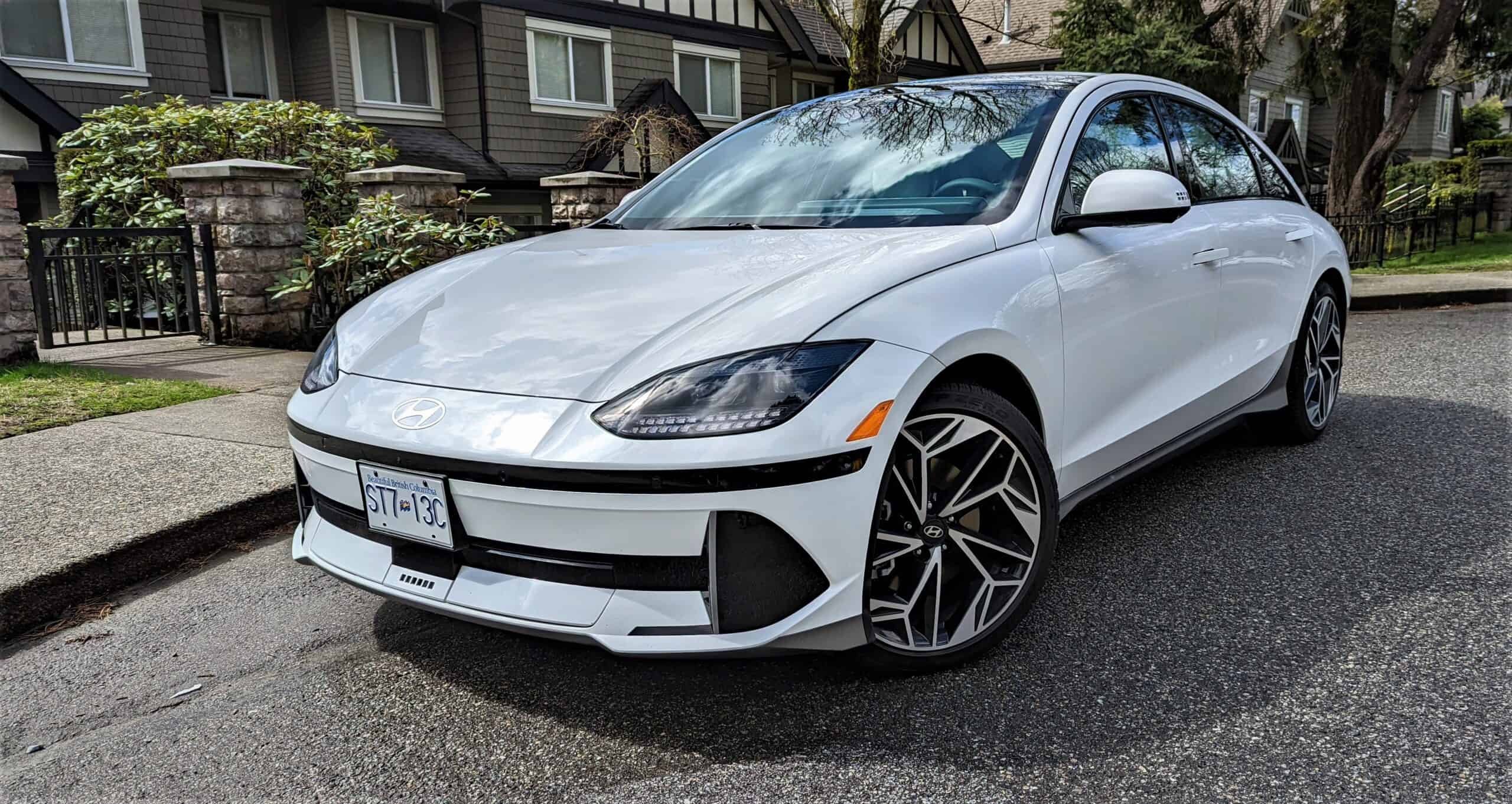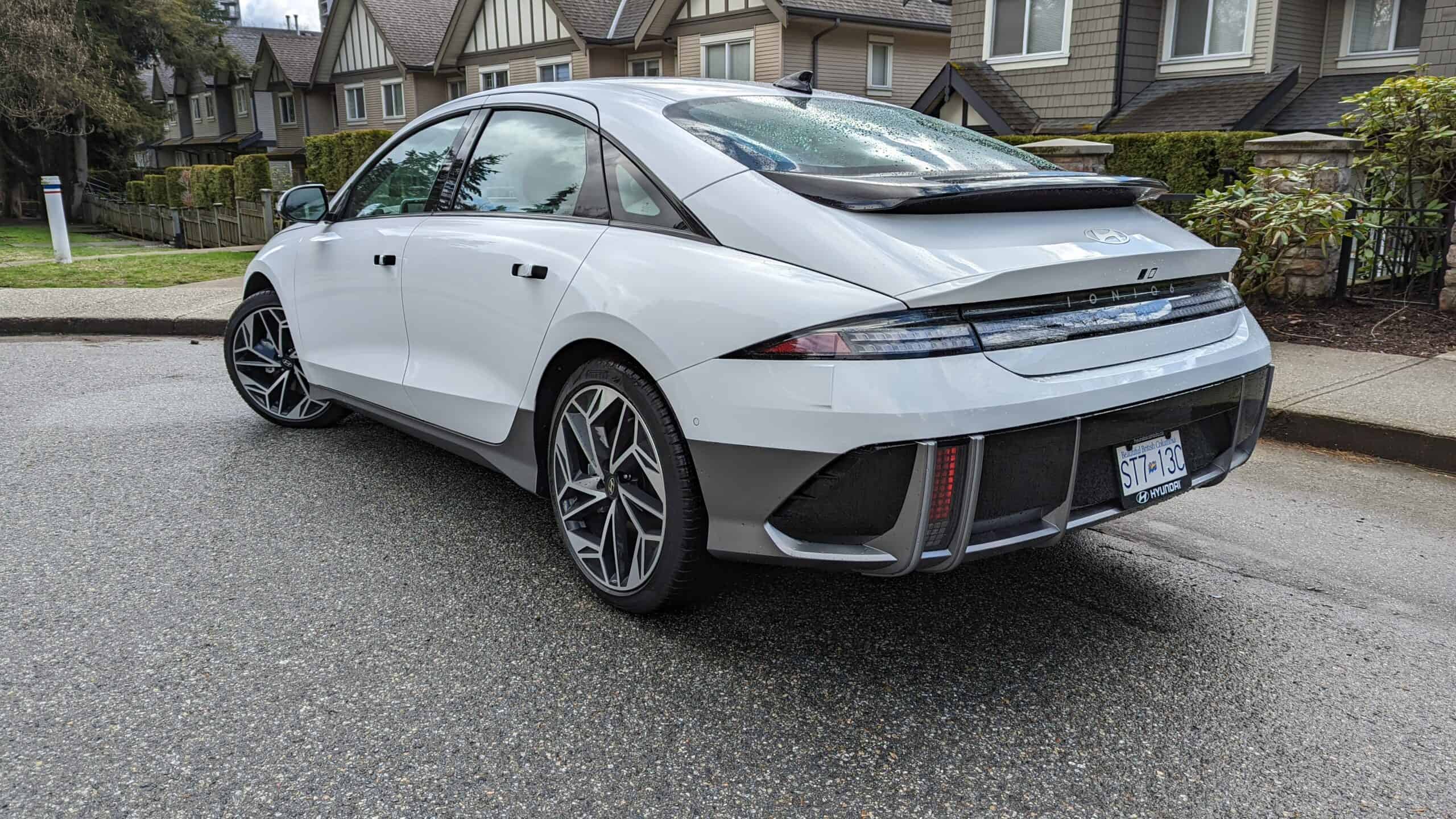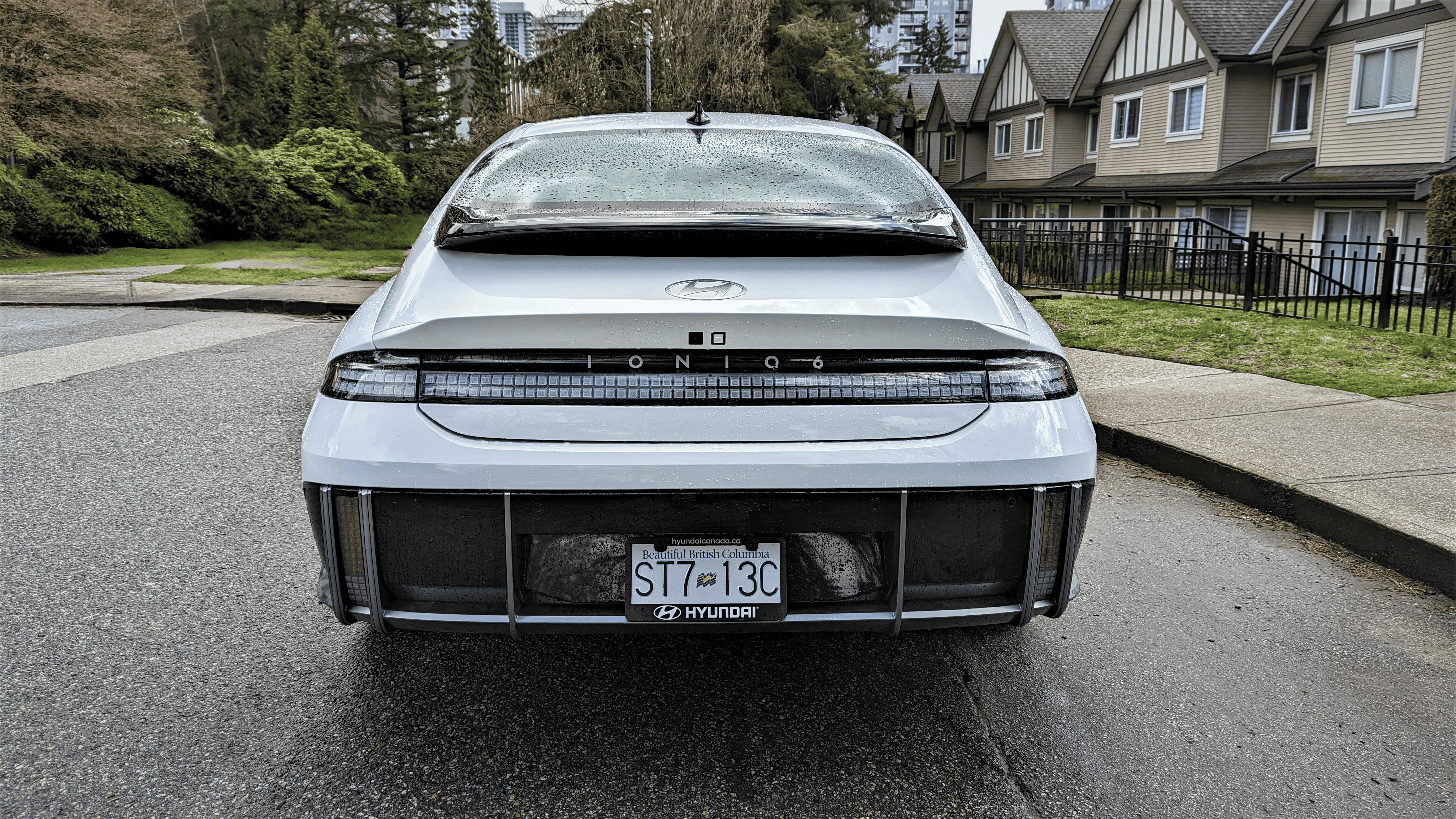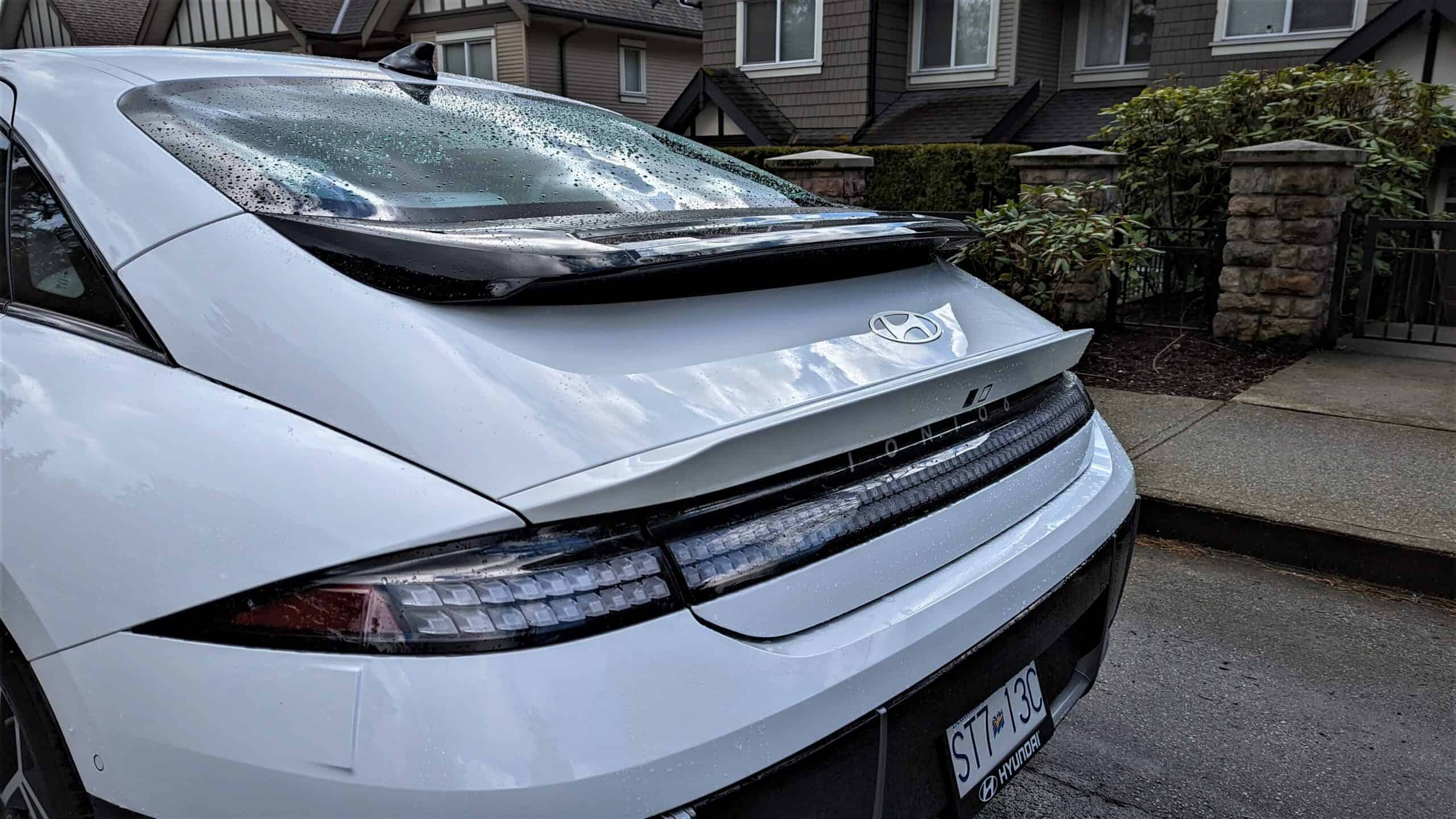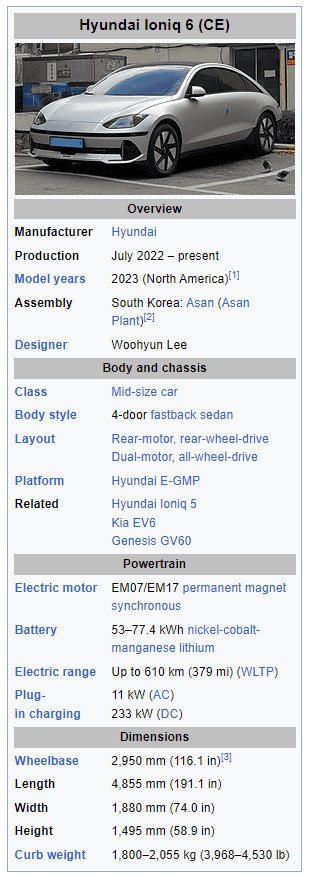In 2021, Hyundai took the world by storm when it showcased the Ioniq 5 all-electric CUV/hatchback. The Ioniq 5 won numerous awards worldwide and is one of the most popular non-Tesla EVs. The Ioniq 5 has been a hit with consumers and auto journalists; I was totally smitten by it when I reviewed a 2022 Ioniq 5 Preferred Ultimate last year. The only issue with the Ioniq 5 has been a lack of inventory, I’m still waiting for my pre-order, which I placed in late 2021.
You’d think because of a lack of inventory of the Ioniq 5, Hyundai would put more resources into producing it, but you’d be wrong. Instead, Hyundai introduced another all-electric model in 2022, the all-new Hyundai Ioniq 6. The Ioniq 6 is based on the E-GMP platform, which underpins the Ioniq 5, Kia EV6, Genesis GV60, and other future models. The big difference between the two Hyundai siblings is the Ioniq 6 is a sedan, which is great to see; however, I still would’ve liked Hyundai to focus on producing more Ioniq 5s to meet the demand before offering new models.
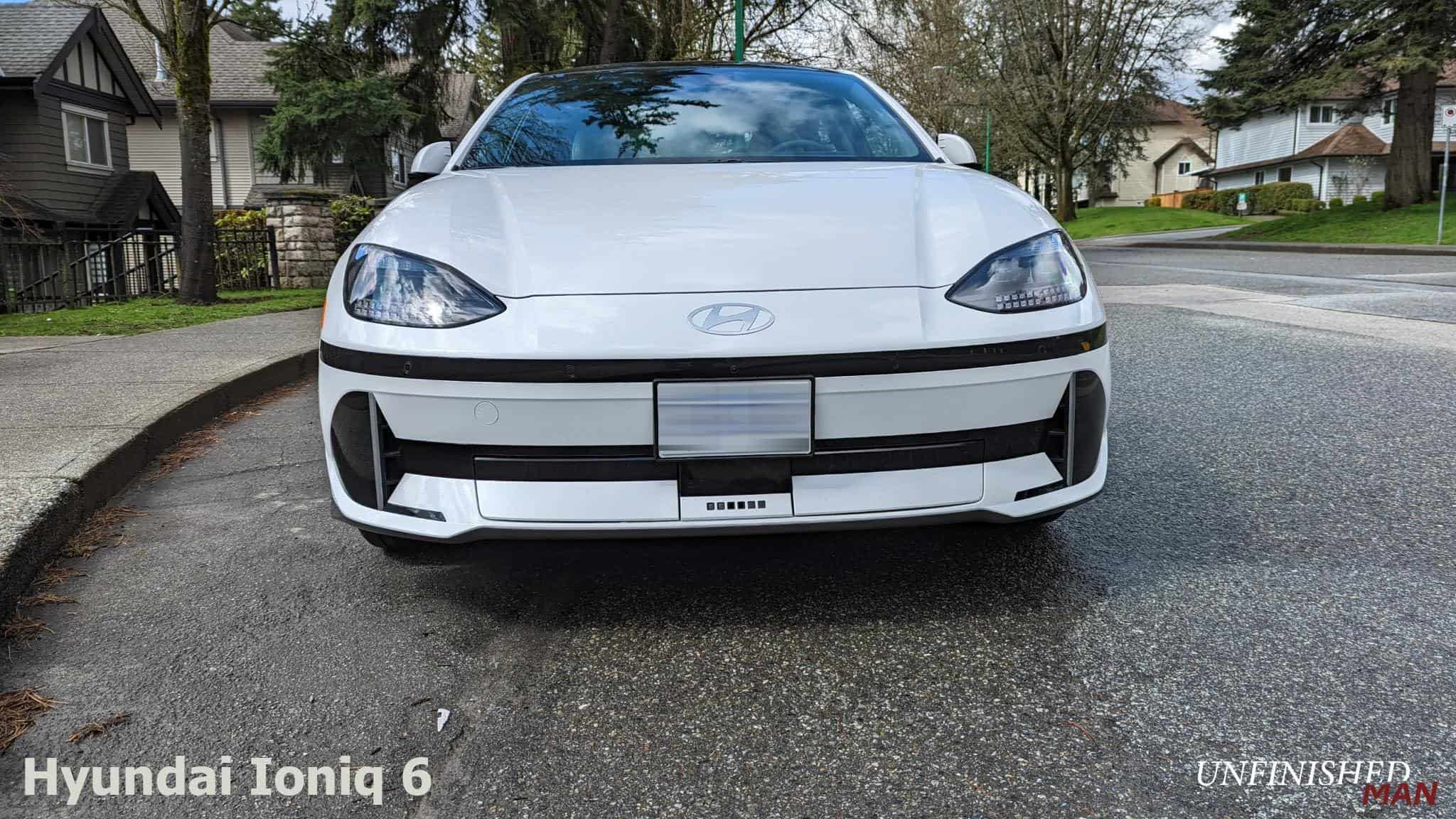
2023 Hyundai Ioniq 6 Canadian Prices
The 2023 Hyundai Ioniq 6 has a starting price of $54,999 for the Preferred Long Range version, this so-called base version might seem more expensive than the Ioniq 5, however, that’s because the Ioniq 6 isn’t offered with the smaller battery pack (58 kWh) found on the base Ioniq 5. Comparing like-for-like models of the 5 and 6, the Ioniq 6 still costs $2,000 more than the Ioniq 5, which has also seen a price increase of $1,000 since I reviewed it in 2022.
Adding all-wheel-drive to the mix increases the price to $57,999, but since this is the new world of EVs, adding AWD means an additional motor and more power, but more on that later. Like the Ioniq 5, you can add the Ultimate Package, for $6,000, to the Ioniq 6 Preferred AWD Long Range.
Instead of being a completely different trim, the Ultimate Package is an add-on, Hyundai has done this to make the Ioniq 6 qualify for the Canadian iZEV incentive. The Ioniq 6 also qualifies for provincial rebates, which differ from province to province, ranging from $0 in Ontario to $7,000 in Quebec. In BC, the rebate ranges from $4,000 to $0, based on your income, check out the BC government website for more details.
Our review car was the 2023 Hyundai Ioniq 6 Preferred AWD Long Range with the Ultimate Package, with a total price tag of $66,643 before taxes and any government incentives. The price included $1,925 for Delivery & Destination and $719 for “Other fees and levies”, I’m not sure what that’s about, but it sure does seem high.
Ioniq 6 Battery Size, Motors, & Charging Times
As I mentioned above, the Ioniq 6 doesn’t come with a smaller battery pack, which is a shame as more choices are always good. Maybe the smaller battery size isn’t as popular in Canada, but some people might not need all big batteries and the option would’ve been good to have.
The only battery on offer is the 77.4 kWh lithium-ion polymer battery pack, the same pack found on the Ioniq 5. The RWD Ioniq 6 is equipped with a single motor at the rear, producing 168 kW (225 horsepower) and 258 pound-feet of torque. The AWD comes with a pair of motors, a 74-kW unit at the front and a 165-kW unit at the rear, producing a combined 320 horsepower and 446 pound-feet of torque.
The RWD Ioniq 6 does the 0 – 100 km/h sprint in a respectable 7.4 seconds. While the AWD Ioniq 6 does the 0 – 100 km/h sprint in 5.1 seconds.
The biggest question for most first-time EV buyers is, what’s the range of the Hyundai Ioniq 6? Thanks to its excellent E-GMP architecture and a more streamlined design, the range on the Ioniq 6 is more than enough for most people.
The Ioniq 6 RWD has an estimated range of up to 547 kilometers (340 miles), that’s an increase of 59 kilometers over the similarly equipped Ioniq 5. The Ioniq 6 AWD has a range of 499 kilometers (310 miles), an increase of 85 kilometers over the Ioniq 5.
The above driving ranges are estimates, these ranges vary with weather conditions and driving styles. During the winter, expect to lose a decent amount of range. Our review took place during a colder week of spring with temperatures in mid-single digits Celsius, the onboard computer showed 480 kilometers on a fully charged battery, which is close enough to the 499 km claimed number. In the summer, I bet I could get over 500 kilometers of range.
As for efficiency, it was a colder week and I had the heater on most of the time, which is another battery killer, even with a heat pump, which the Ioniq 6 comes with. The onboard computer showed 17.2 kWh/100 km, which is a better number than the Ioniq 5 I reviewed last year under similar weather conditions.
On one of the warmer days where I didn’t use the heater and drove sensibly, I was able to get 14.1 kWh/100 km; so, driving in the summer months should be quite efficient.
How long does it take to charge the Hyundai Ioniq 6?
The E-GMP platform can support both 400-volt and 800-volt charging infrastructure, making it quite convenient to charge quickly, if you have access to fast chargers.
- On a 350-kW DC fast charger, the battery can be charged from 10% to 80% in 18 minutes. Getting a 5-minute top-up at a fast charger gives about 105 kilometers of range.
- Using a 50-kW charger (which is more common), it takes 73 minutes to charge the battery from 10% to 80%.
- On a level 2 charger (240-volt home charger), it takes 6 hours and 55 minutes to fully charge the batteries.
- Using a 120-volt standard household outlet is also an option, it would take between 59 and 65 hours to fully charge the batteries.
The 120-volt option might seem like not a viable option, but it worked just fine for me. I drove approximately 65 km/day and was able to keep the batteries fully charge at all times, I made sure to plug the car in every time I wasn’t driving it. If you own an EV, it’s a good idea to install a level 2 charger, if you are able to.
Driving the Ioniq 6
Even though what’s under the skin of the Ioniq 6 is the same as the Ioniq 5 (same E-GMP platform), the vehicles have similar driving characteristics. However, since the Ioniq 6 is a sedan, the center of gravity is lower and the suspension is a bit firmer than that of the Ioniq 5. The Ioniq 6 isn’t as “floaty” as the Ioniq 5, but the basic driving characteristics are the same, which can be said about pretty much all EVs, they all drive pretty similar. The only difference I’ve noticed is in the suspension and steering setup.
The Ioniq 6 isn’t a bad car to drive, it’s quick and handles pretty well in the corners. There isn’t much steering feel and the suspension is comfortable without being too floaty. It’s no sports sedan but the immediate power delivery does make it fun to drive.
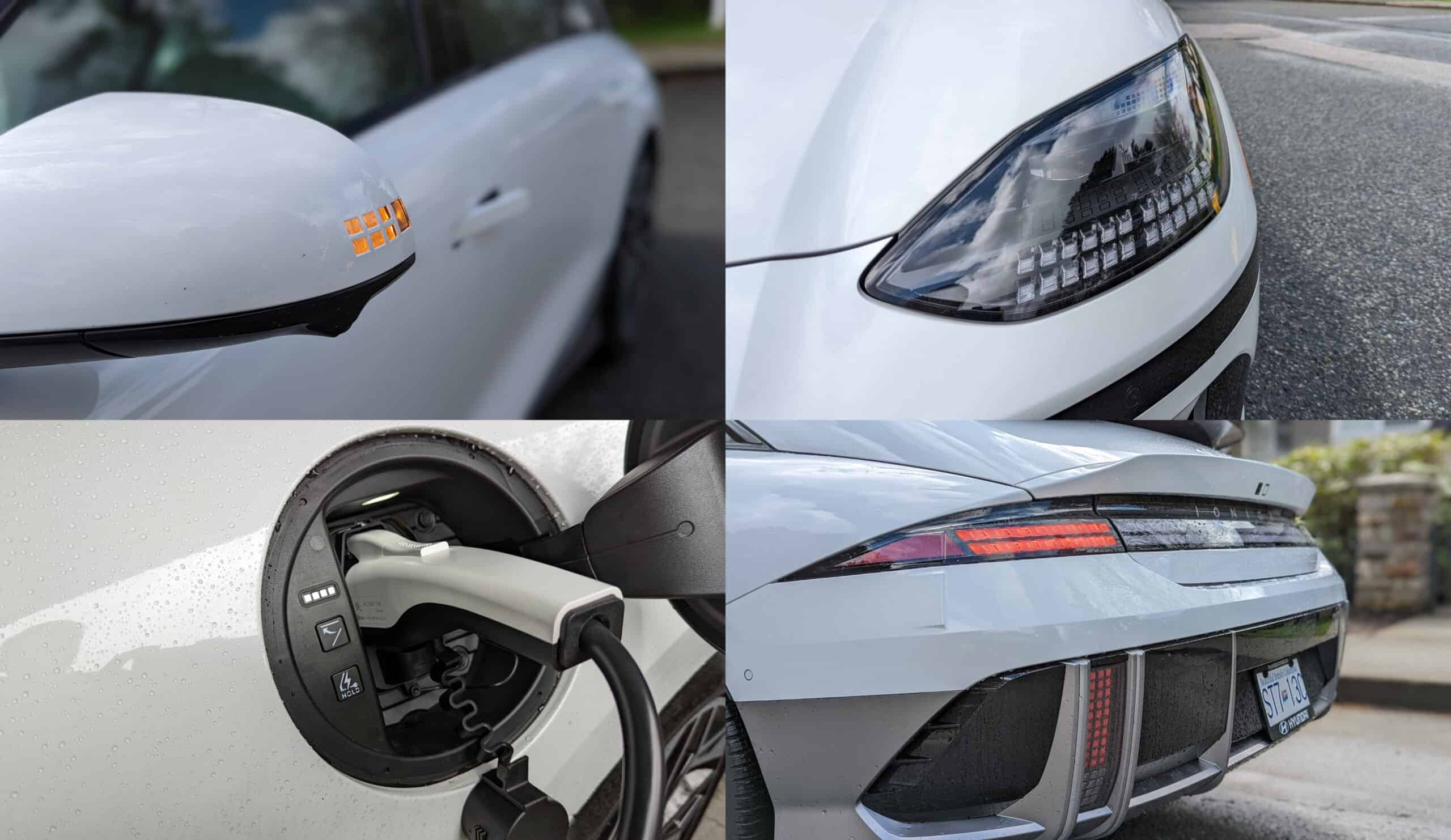
2023 Hyundai Ioniq 6 Styling
When I first saw the Ioniq 5, the first purpose-built Hyundai EV, I was in love. Even though I’m not much of a CUV guy, I loved the way it looked and how far Hyundai designers pushed the envelope (efficiency be damned).
Seeing the Ioniq 6 for the first, I didn’t have the same feeling. Based on the pictures, I didn’t find the Ioniq 6 to be very attractive at all. Hyundai designers went the efficiency route with the Ioniq 6, it has a coefficient of drag of 0.22, one of the best in the industry. However, seeing the Ioniq 6 in person, it doesn’t look at bad as in pictures. After spending a week with it, and looking at it from all angles, I think it’s a decent-looking car, but I’m still not fully sold on it. I do like the rear end of it, which has been compared to some SAAB cars, Porsche Ducktails, Citroen cars, and more.
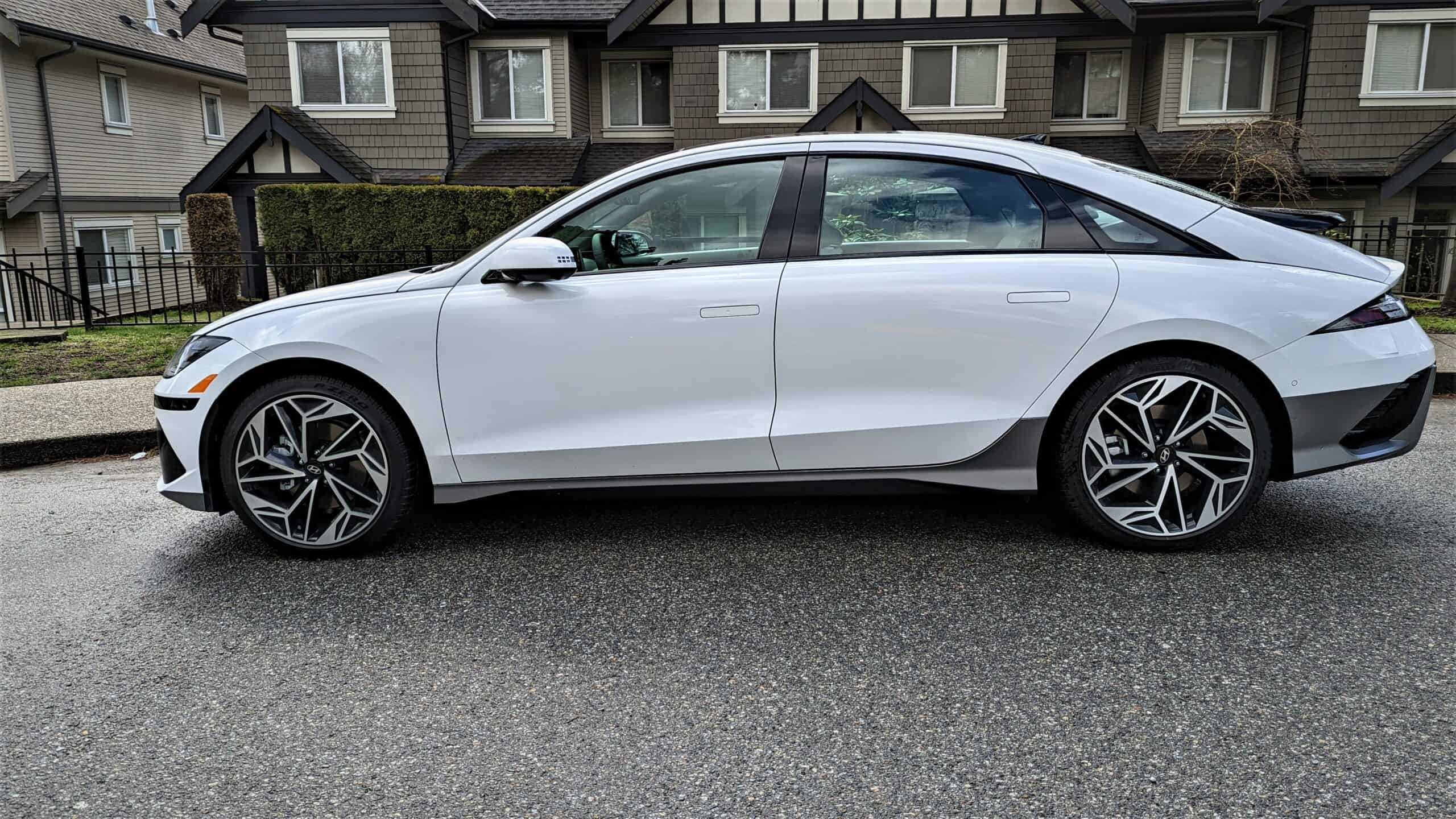
The Ioniq 6’s design is inspired by the Hyundai Prophecy concept. I think “inspired” by it is a very strong term, I’d say it’s loosely based on the concept of the design. Of course,
I think where most EV sedans fail is at the front because there isn’t a need for an engine, the hood is usually shorter and falls downwards quite fast from the windshield onwards (for better aerodynamics), giving the car weird proportions. If you look at any beautiful gasoline-powered sedans, they always feature long hoods. Take for example the Genesis G80, even in EV form, it still uses the ICE version’s body, making it one of the most attractive EV sedans on the market.
2023 Hyundai Ioniq 6 Interior & Features
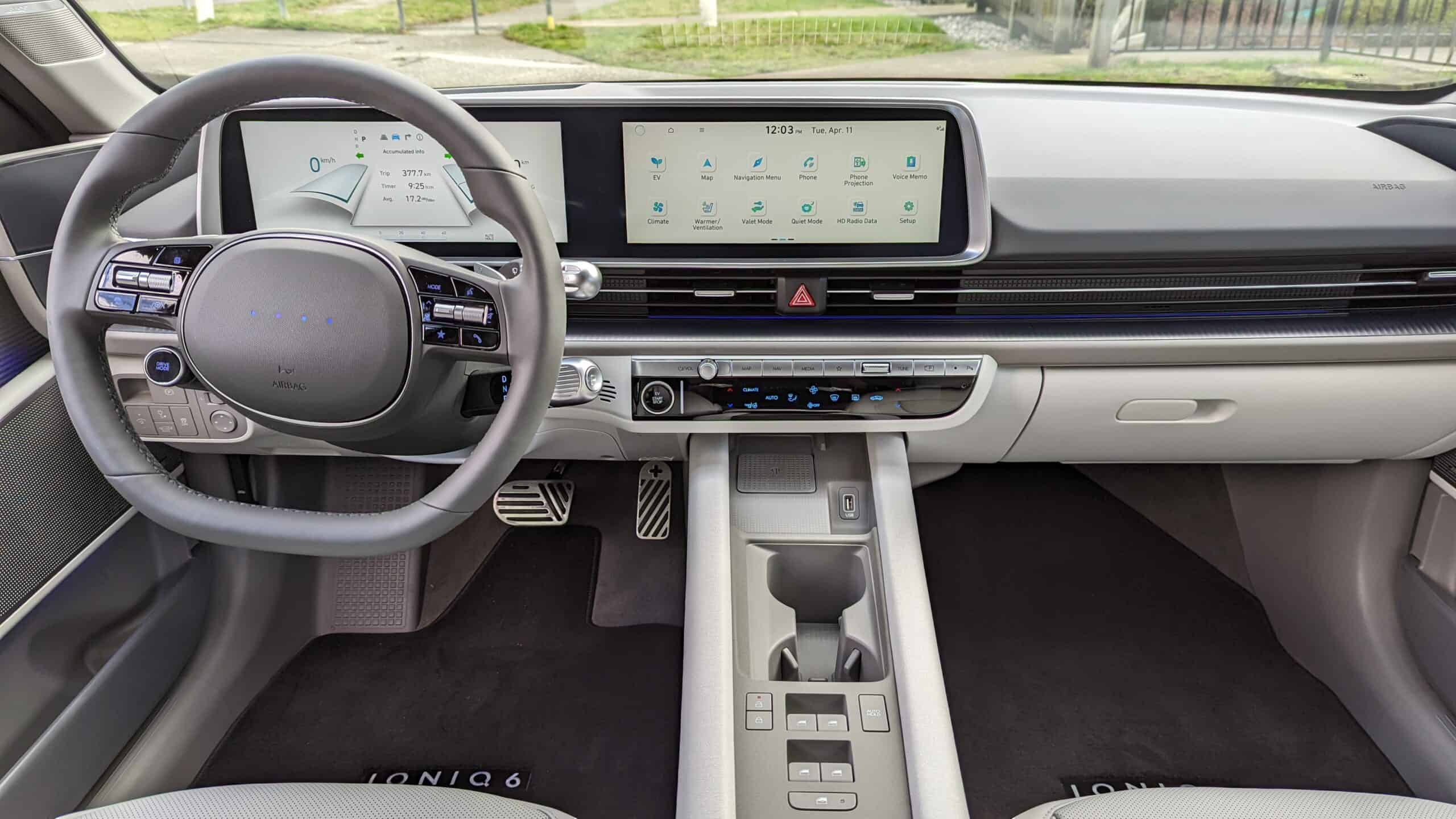
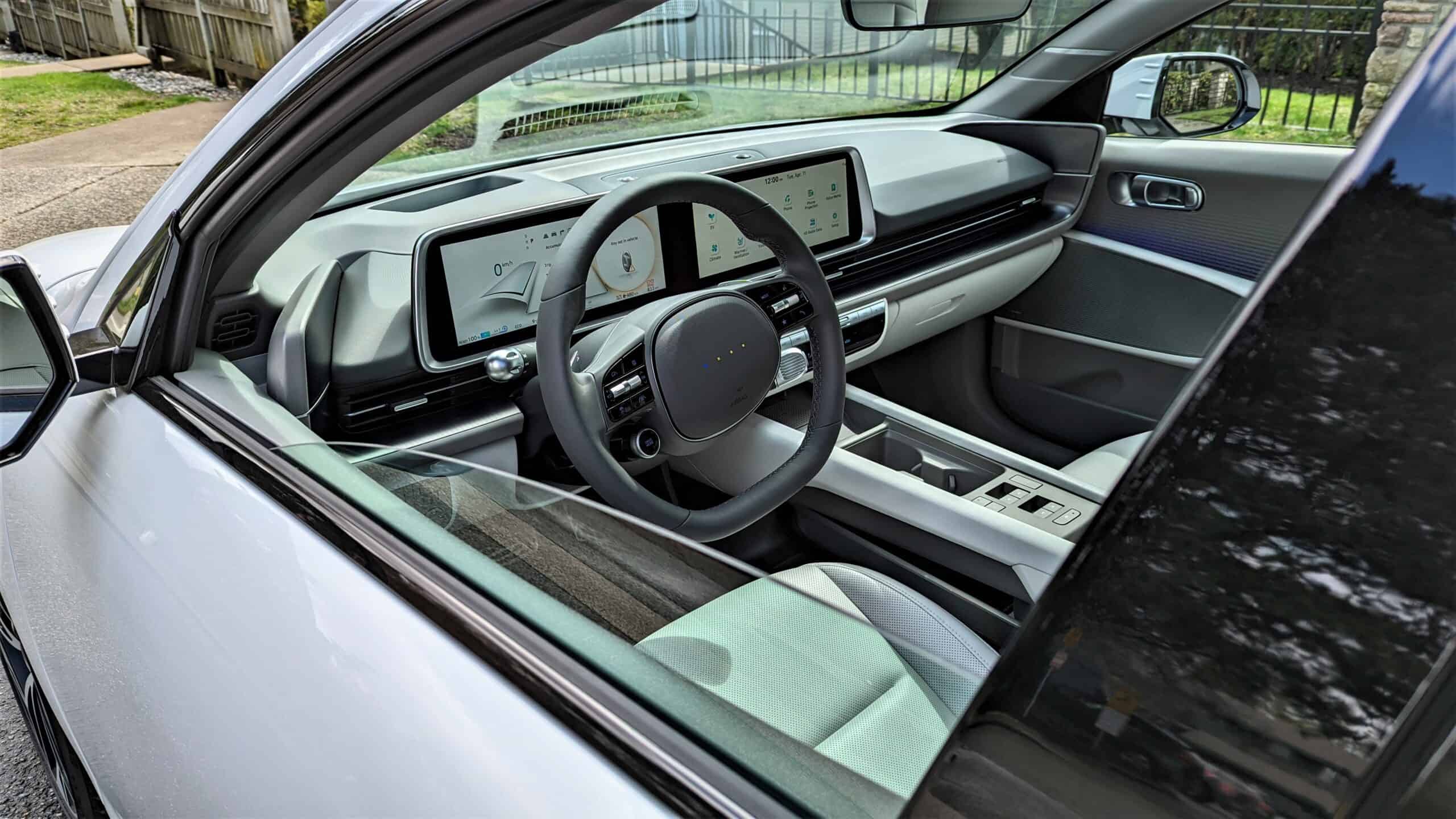
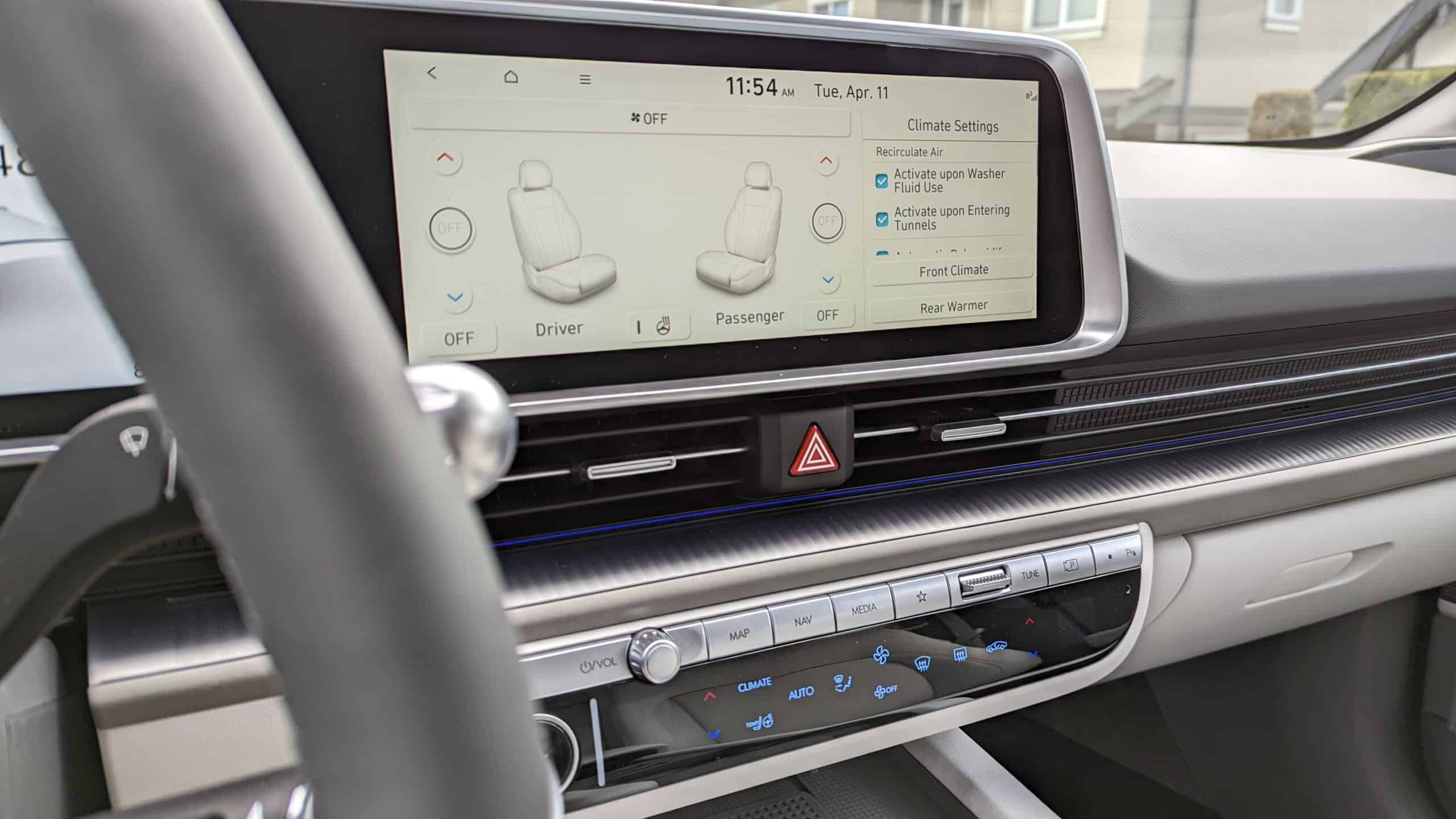
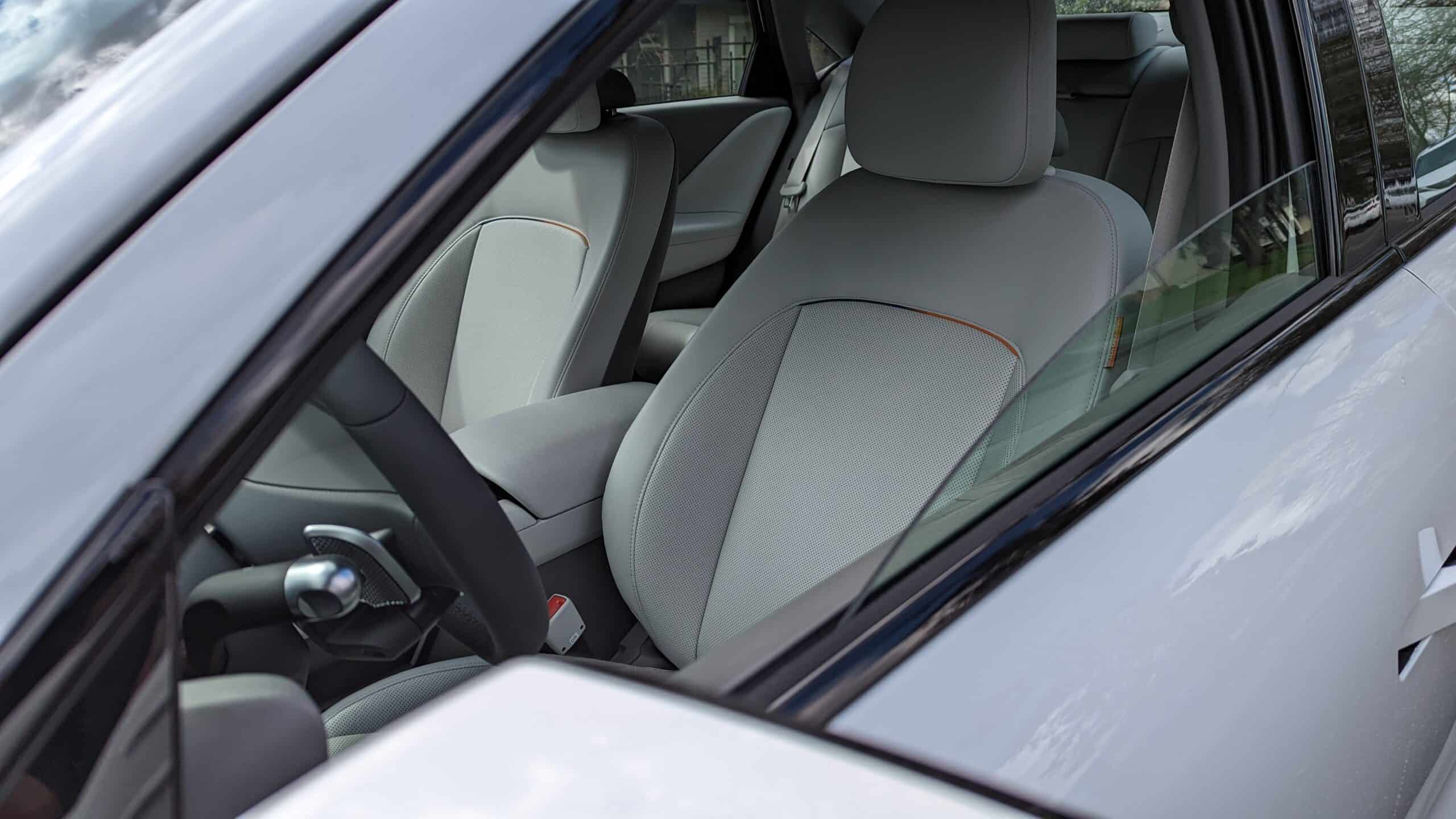
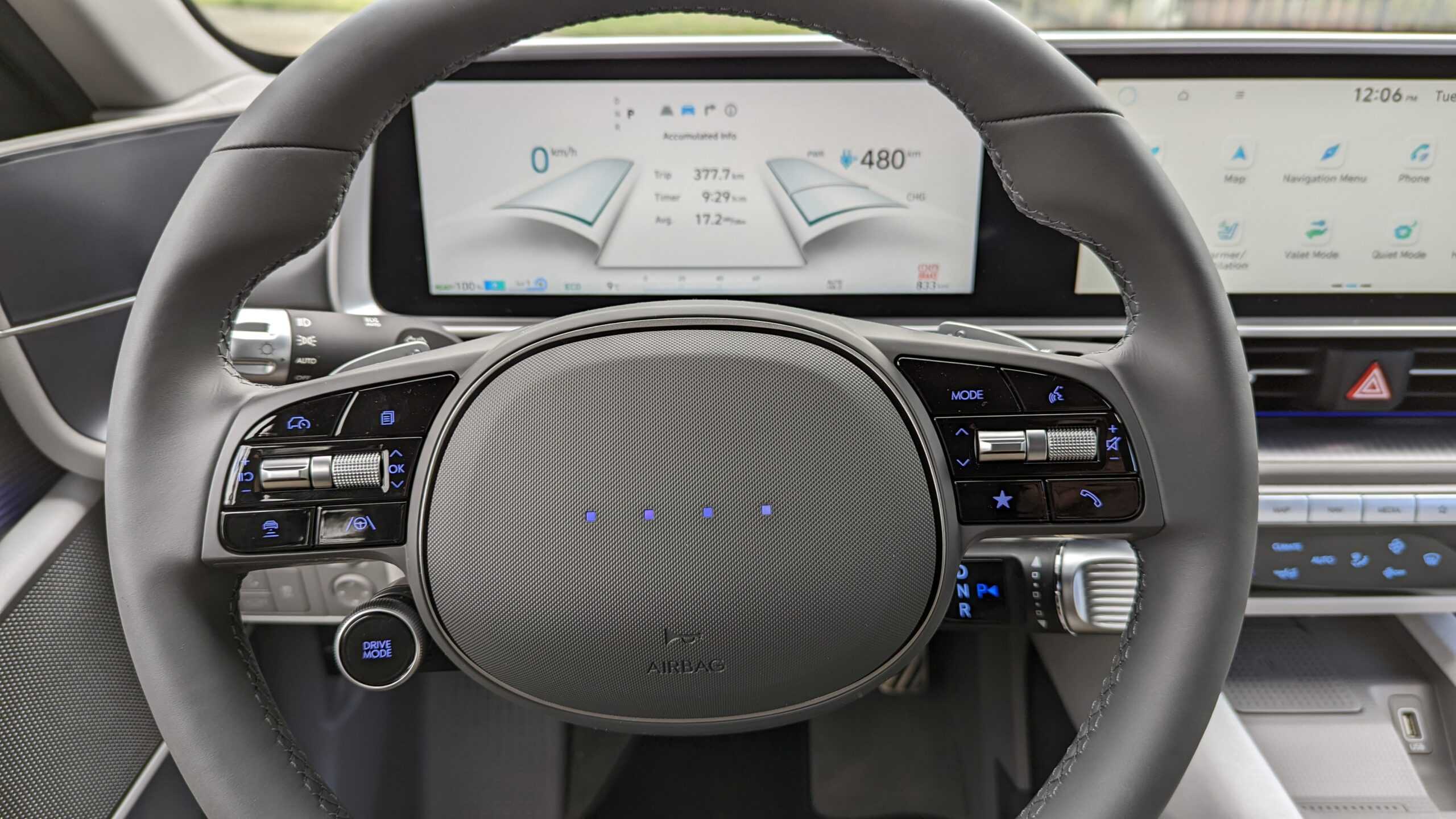
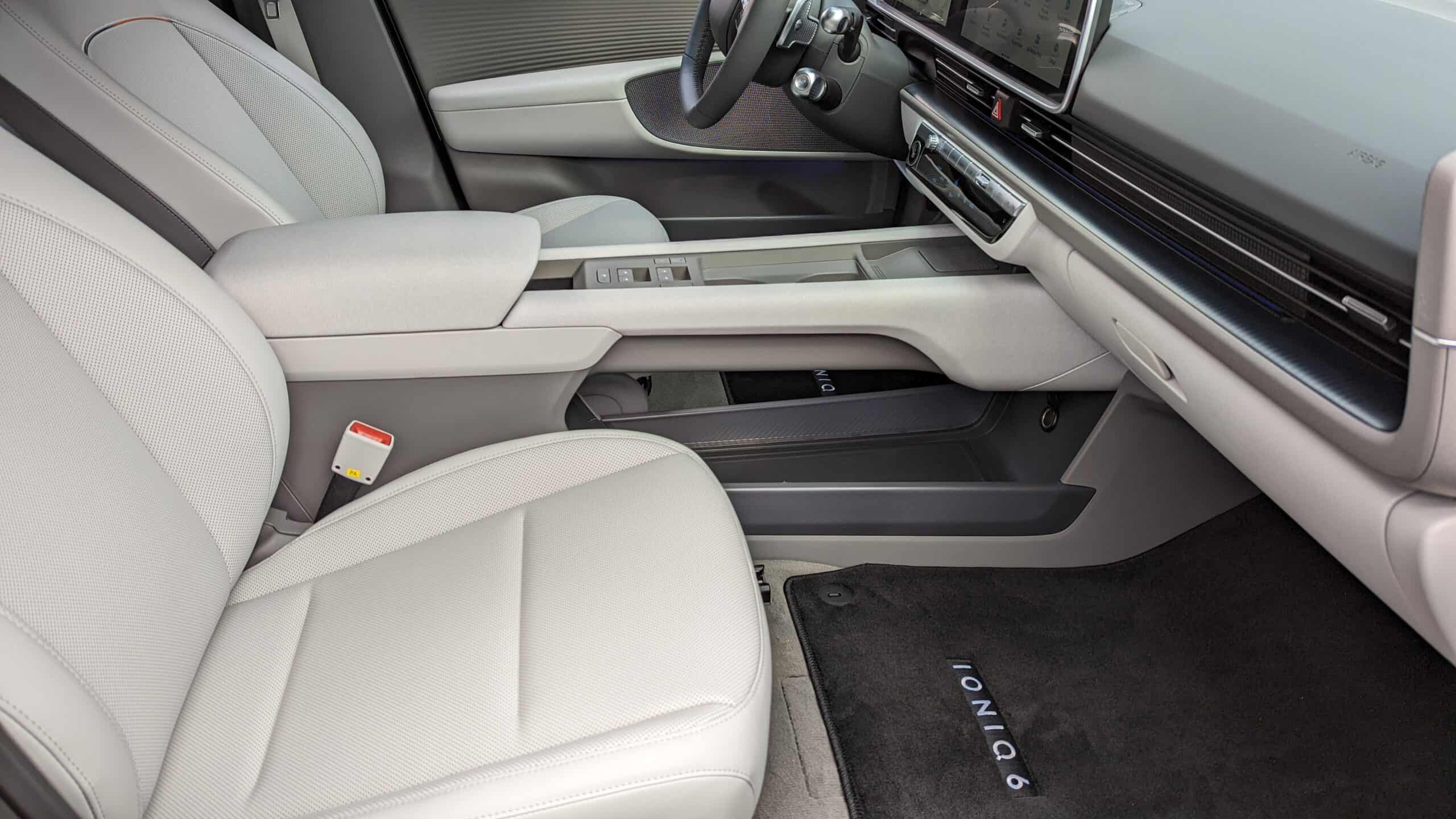
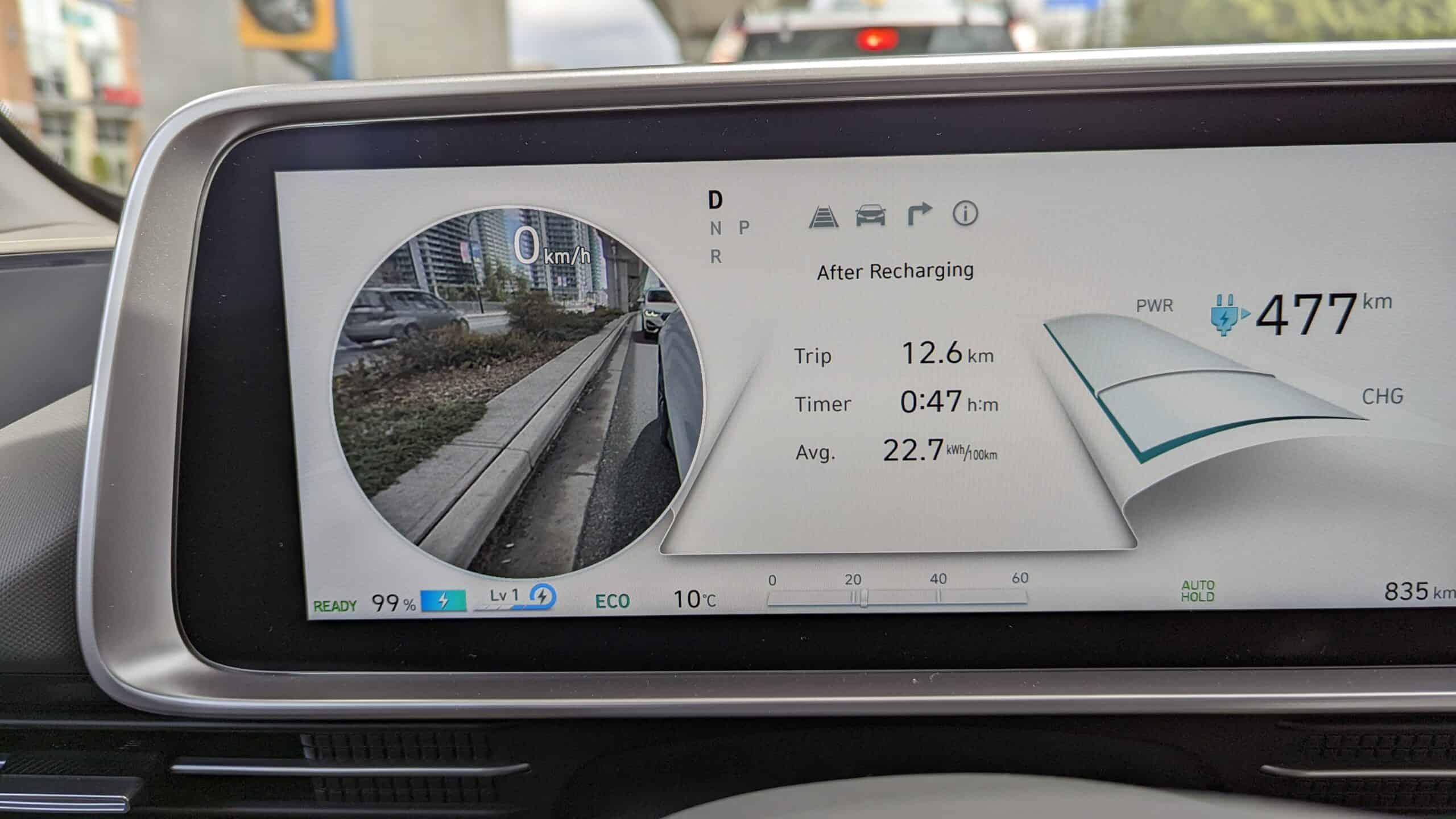
Thankfully, people spend most of their time on the inside of the car, so they don’t have to look at the exterior that much. The interior on the Ioniq 6 doesn’t disappoint, the dashboard is quite similar to that of the Ioniq 5.
The Ioniq 6 features the same dual 12.3” screens found on the 5, but the area surrounding the screens is black, the 5 has it white. The white area was my biggest dislike of the Ioniq 5, which goes to show how great the interior of the Ioniq 5 is. Surrounding the screens is aluminum trim, the combination of the black and aluminum trim gives the Ioniq 6’s interior a premium look. The touchscreens are responsive and provide loads of information. The sides of the dashboard feature winglets, which is an homage to the “streamliner” theme of the car and they would house screens for digital mirrors, which are available in other markets but not (yet?) legal in Canada and the United States.
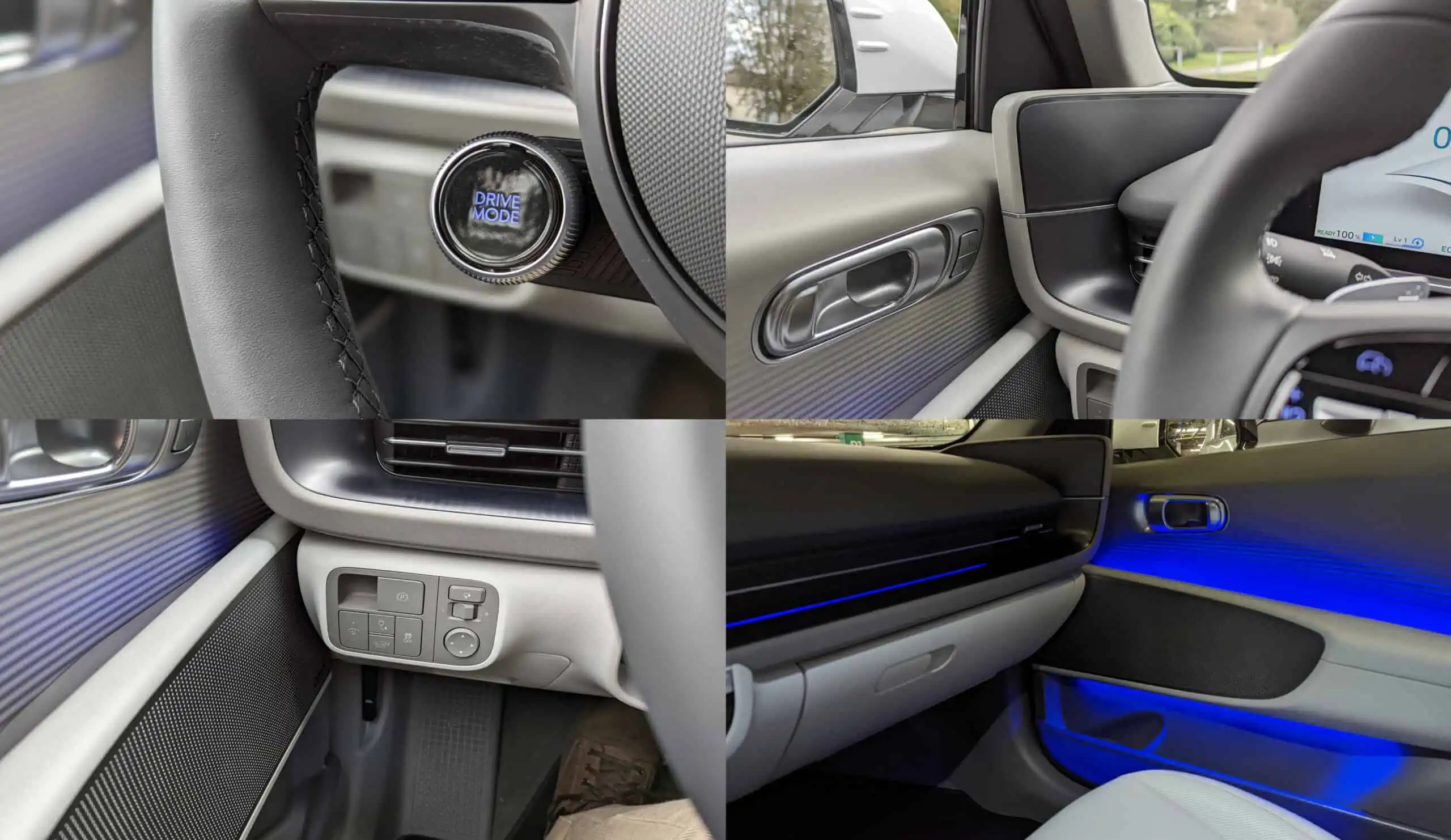
The major difference between the 5 and 6’s interior is the center console, which is a solid piece on the Ioniq 6 that can’t be moved backward and forward like on the Ioniq 5. On the Ioniq 6, it houses the wireless charging pad, a pair of cup holders, and the lock/unlock and window buttons. The doors have a clean minimalist look thanks to the removal of these buttons. I would’ve liked the heated seats and steering wheel buttons to be placed on the center console, which has more than enough room; instead of having to go through the climate screen to bring up the heated seats/steering wheel display on the main infotainment screen and then choosing to heat/cool the seats and steering wheel. There are just too many steps for such a simple task, which could’ve been easily solved by placing the buttons close to the window buttons on the center console.
The seats are comfortable but I did find the seating position to be a bit higher than I like. These seats also don’t have the “Relaxation Mode” like the Ioniq 5, which came in handy when I was waiting for the batteries to charge at a public charging station.
The rear seats offer an extremely generous amount of legroom; however, I found a lack of lower thigh support, which would make longer drives quite tiring for rear passengers. I guess the slightly higher seating position has something to do with it.
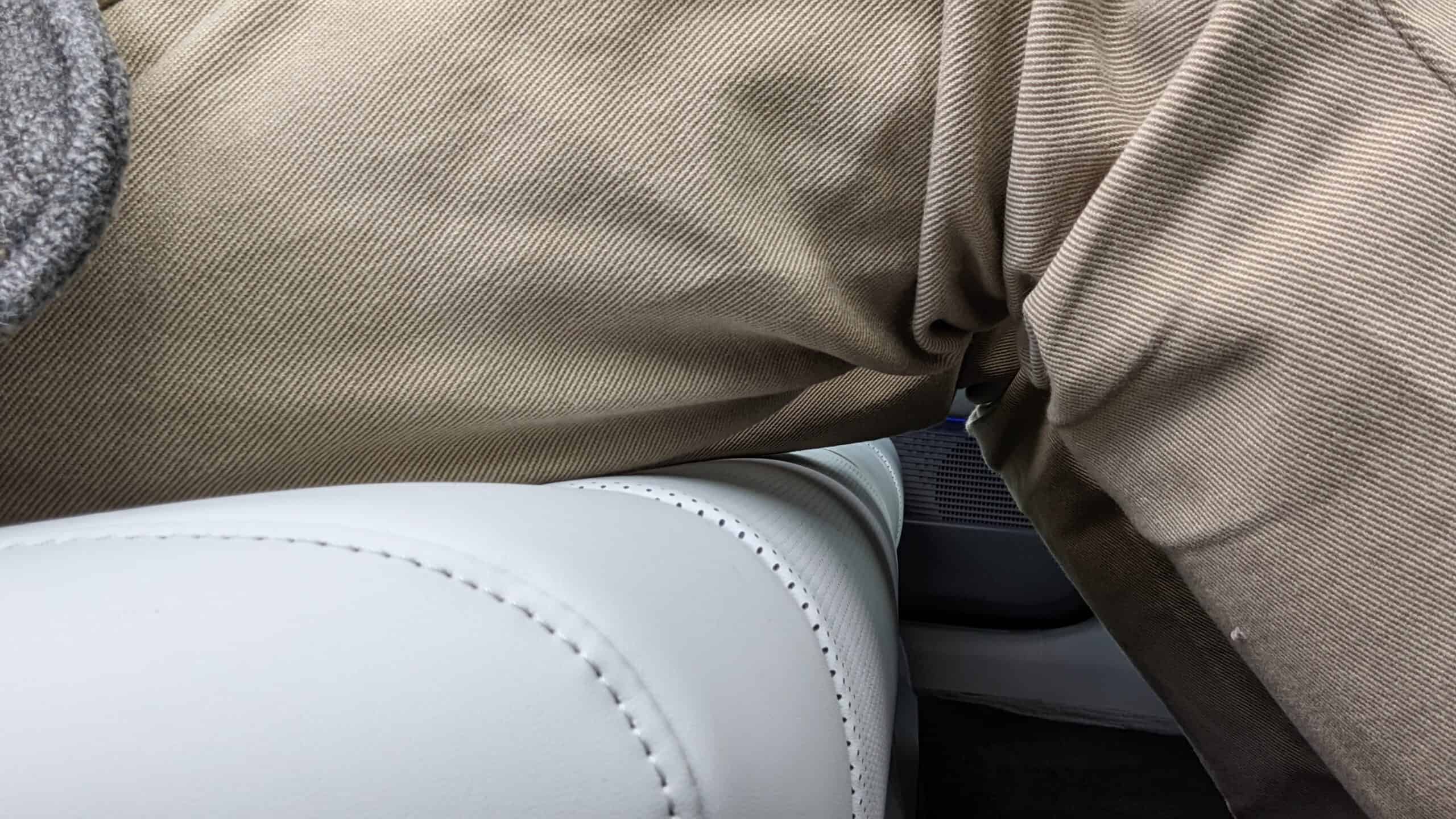
The 2023 Ioniq 6, especially in the fully loaded trim, comes with all the bells and whistles you’d expect in a modern car. It comes with features like heated/cooled front seats, heated rear seats, heated steering wheel, blind spot monitoring, smart cruise, and a whole host of safety features.
The smart cruise works quite well and it now comes with auto lane change, which wasn’t available on the Ioniq 5 we reviewed last year. The auto lane change is like the one found on Mercedes-Benz vehicles. When you have the smart cruise activated, flipping the left or right turn signal on, the car will automatically change lanes if safe.
For a complete list of all the safety, tech, and convenience features, head over to Hyundai Canada’s website.
Overall Impressions
I enjoyed my time with the 2023 Hyundai Ioniq 6, I think it’s an excellent EV with plenty of range, fast charging, and a luxury vehicle level of comfort and features. The exterior looks might not be for everyone, but it’s great to see Hyundai designers being bold and creating vehicles that will not be mistaken for other cars.
2023 Hyundai Ioniq 6 Review Photo Gallery

